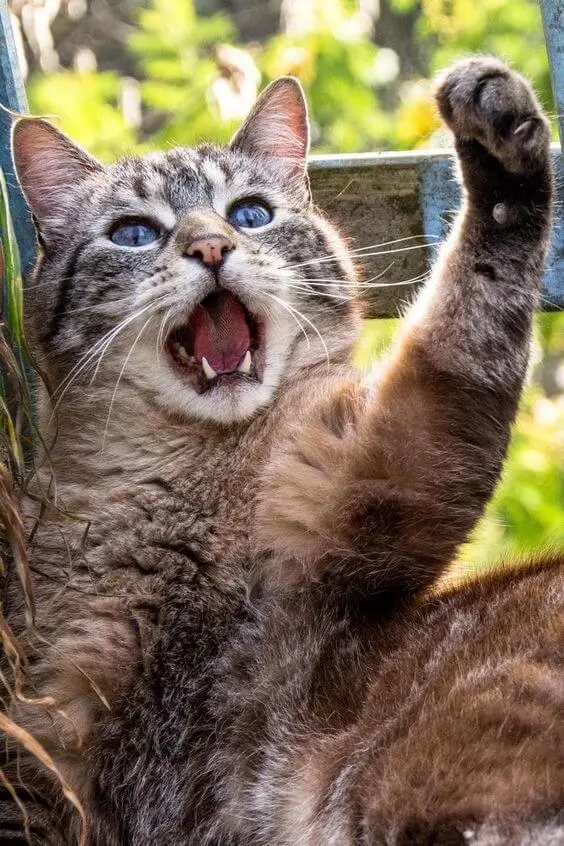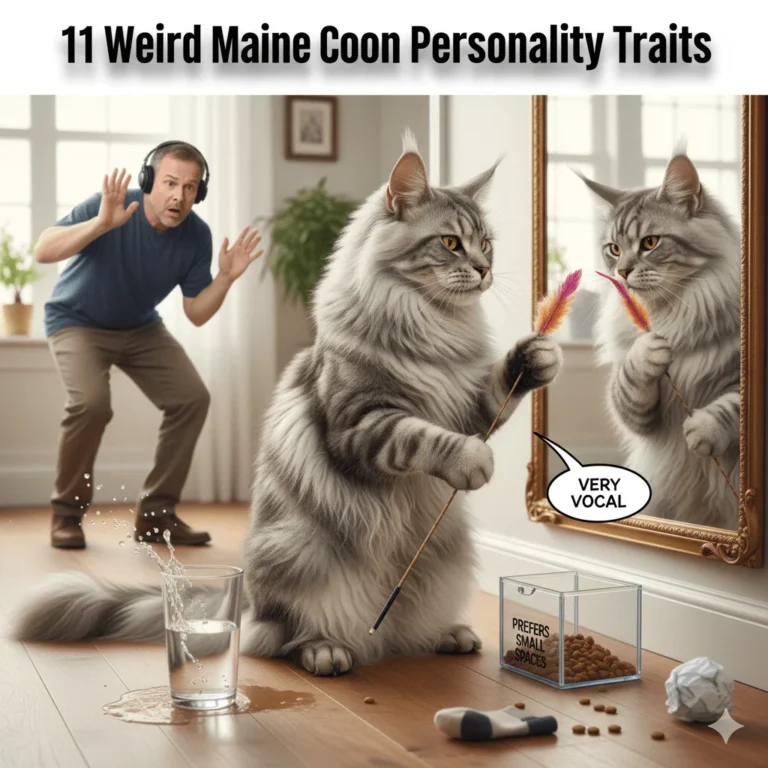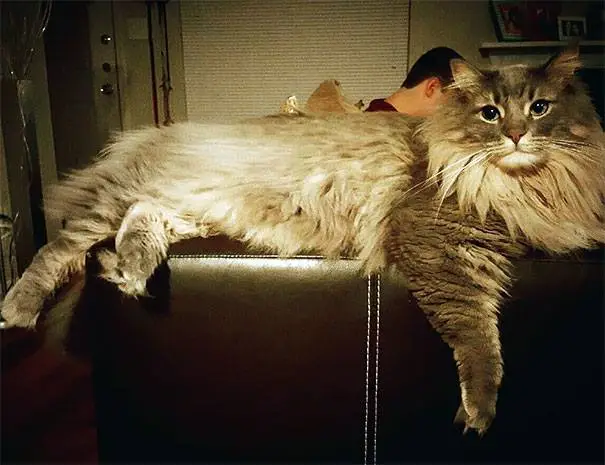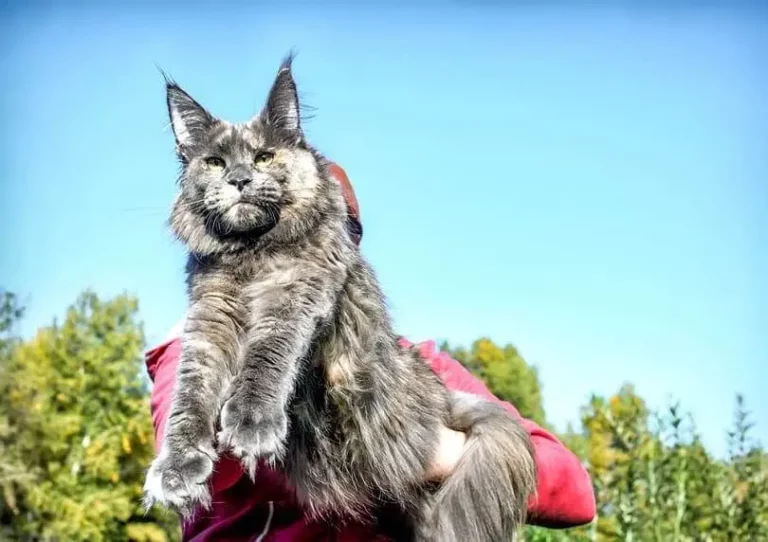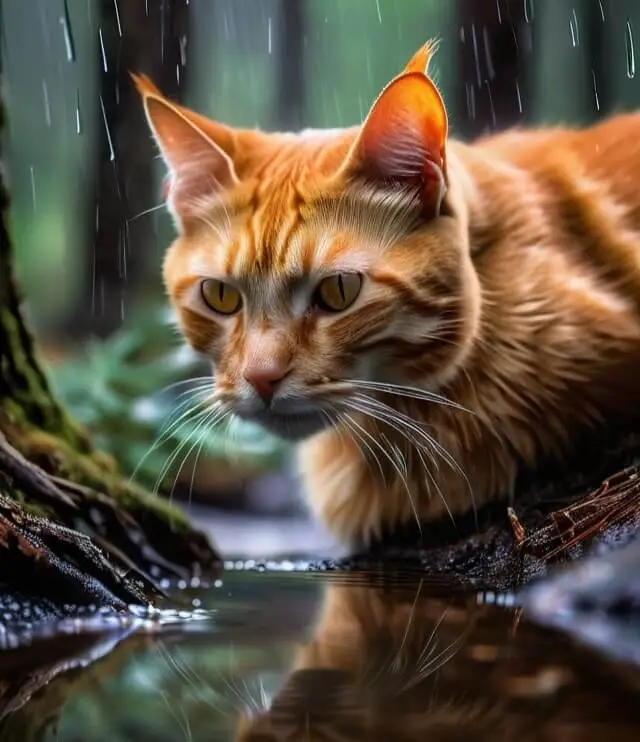The Maine Coon Cats Breed Origin and History
The Maine Coon Cats Breed is one of the most popular and beloved cat breeds today. They are known for their large size, fluffy coat, and gentle personality. The Maine Coon cat breed has a fascinating origin and history. While there are many legends and theories about how the breed came to be, the true origin of the Maine Coon remains a mystery. Despite a decline in popularity in the mid-1900s, the Maine Coon is now a beloved cat breed around the world, known for its size, fluffy coat, and gentle personality. They are 10-16 inches in height while house cat is 9 to 10 inches in height. It is normally 10-25 pounds in weight. They are 40 inches in length.
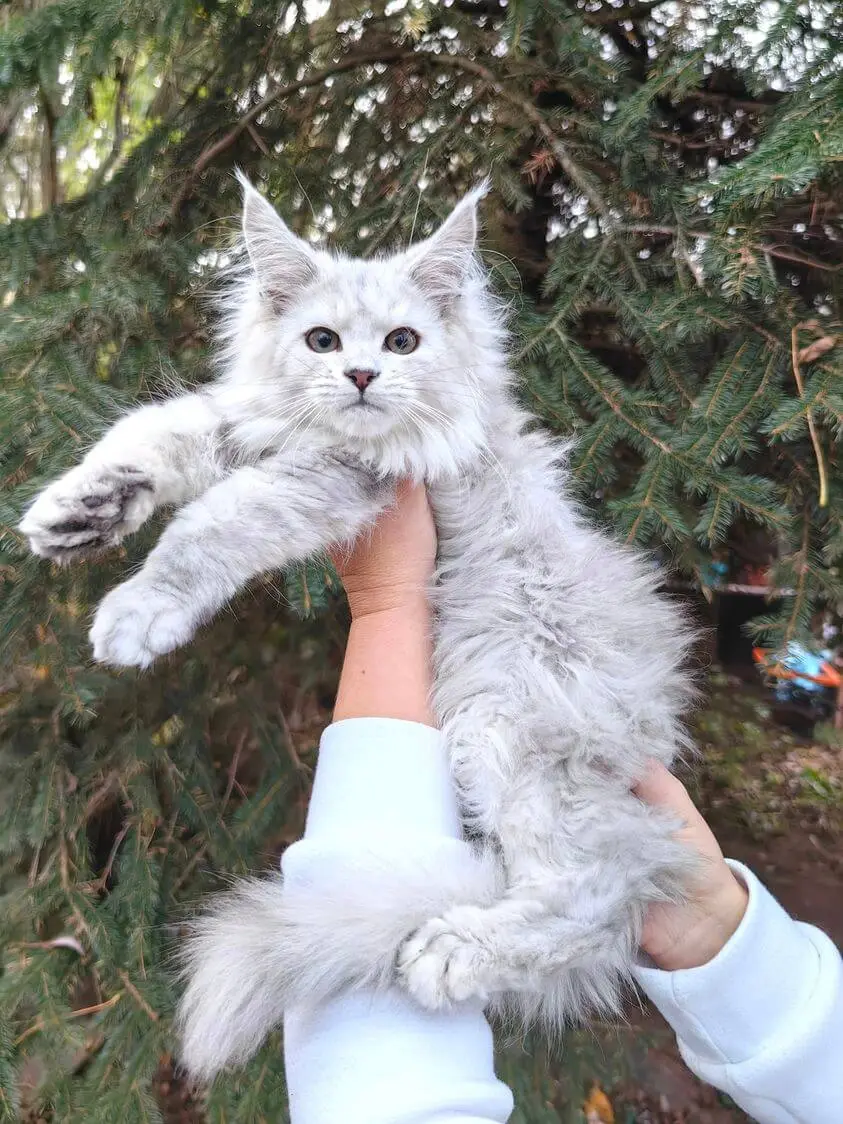
Where Do Maine Coon Cats Come From?
The Maine Coon Cats Breed is a domestic cat breed that originated in the United States, specifically in the state of Maine. The breed’s name comes from its place of origin, and the word “coon” was a colloquial term used to describe raccoons, which were common in the state at the time.
Maine is a northeastern state in the United States that is known for its rugged coastline, dense forests, and abundant wildlife. In the 18th and 19th centuries, Maine was a major seafaring state, with many ships and sailors traveling to and from ports around the world. It was during this time that the Maine Coon breed is believed to have originated.
As sailors traveled to foreign ports, they often brought cats aboard their ships to help control the rodent population. Many of these cats were long-haired breeds, such as Persians, and they mated with local shorthaired cats in Maine. Over time, this led to the development of the Maine Coon breed.
Maine Coon Cat history The popular breed
Despite the uncertainty surrounding its origin, the Maine Coon quickly became a popular breed in Maine and throughout the United States. In the late 1800s, the breed was featured in cat shows and competitions, and it was often compared to the Persian breed, which was popular at the time. Maine Coons were known for their large size, impressive coats, and friendly personalities.
However, the popularity of The Maine Coon Cats breed began to decline in the early 20th century, and by the 1950s, the breed was almost extinct. This was due in part to the increasing popularity of other breeds, such as the Siamese and the Persian, as well as the rise of commercial cat food, which made it easier to keep cats indoors.
Fortunately, a group of dedicated breeders worked to revive the Maine Coon breed in the 1960s and 1970s. They focused on breeding healthy cats with the classic Maine Coon traits, such as large size, fluffy coats, and friendly personalities. Today, the Maine Coon is one of the most popular cat breeds in the world, and cat fancier organizations around the globe recognize it.
Origin Of Breed “The State Of Maine”
The Maine Coon is a unique and beloved cat breed that originated in the state of Maine in the United States. While the exact origin of the breed is not known, it is believed to have developed through a combination of breeding between long-haired cats brought over on ships and local shorthaired cats. Despite a decline in popularity in the mid-1900s, the Maine Coon has made a comeback and is now one of the most popular cat breeds worldwide.
The Maine Coon History “The Oldest American Breed”
The Maine Coon Cats breed was first officially recognized in the United States in the late 1800s. The breed was popular in the New England area and was often used as a barn cat, where they would hunt mice and other small rodents. Maine Coons were also popular as house cats, and they were known for their gentle and affectionate personalities.
The state of Maine and North America is where the Maine Coon cat comes from. Numerous hypotheses have been put forth about where exactly they came from.
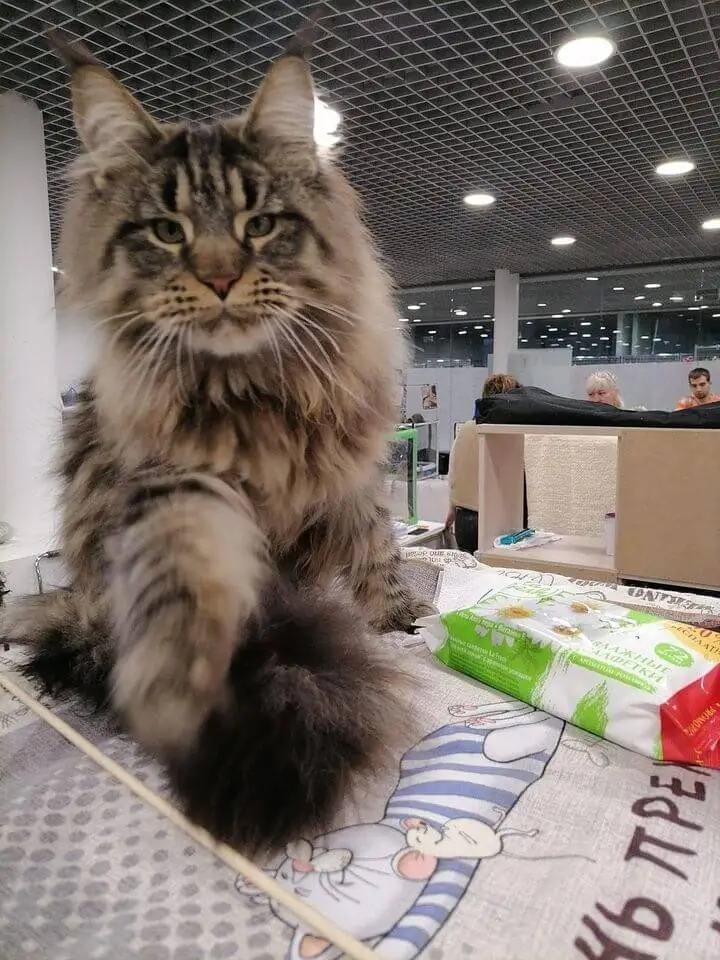
The breed is said to have been created by domestic cats mating with raccoons, which is impossible to genetically
Similarity with Norwegian Forest Cat:
It is expected that The Maine Coon Cats Breed dives from the matings of neighborhood short-haired homegrown felines and the long-haired varieties brought abroad via sailors or the Vikings. The Maine Coon’s similarity to the Norwegian Forest Cat, another breed that is believed to be a descendant of cats that traveled with the Vikings, demonstrates the connections to the Vikings.
In 1861, the first Maine Coon was registered. “Captain Jenks of the Horse Marines” was the name of the white and black man. Maine Coons were popular show cats even in the 1800s. At the Madison Square Garden Show, a brown tabby female named “Cozie” won best in the show.
Similarity with Brown tabby cats:
Maine Coon was initially only used to refer to brown tabby cats. “Maine Shagged” was the name given to other color variations. The breed disappeared from shows at the beginning of the 1920s. More people were interested in exotic cats like Persians. Consequently, the variety confronted tough situations. It was declared extinct in 1959, and a newspaper reported in 1973 that it did not even exist. However, it did exist, and the Maine Coon Breeder and Fanciers Association (MCBFA) was established in 1968 as a result of the hard work of dedicated breeders and their belief in the breed. As a result, Maine Coons were no longer recognized by the clubs, and once more they were registered and qualified to win titles.
The territory of Maine has proclaimed the variety a state feline. After the Persian, the Maine Coon represents the most cats at shows.
Similarity with polydactyl felines:
Polydactylism, or having more toes on their feet, was a trait shared by many of the original Maine Coon cats that lived in New England. It is believed that this occurred in between 30 and 40 percent of the Maine Coon population. They can all be found in Ernst Hemingway’s Key West, Florida, home. Because it violates competition standards, polydactylism is rarely observed. A few reproducers breed polydactyl felines.
Maine Coons were featured in several cat shows in the late 1800s and early 1900s, and they were often compared to the Persian cat breed, which was popular at the time. Maine Coons were also known for their impressive size, with some cats weighing up to 20 pounds or more.
In the early 1900s, the popularity of the Maine Coon breed declined, and the breed was almost extinct by the 1950s. However, a group of dedicated breeders worked to revive the breed, and today, Maine Coons are one of the most popular cat breeds in the world.
Theories on The Maine Coon Cats Breed Origin:
The Maine Coons Cats Breed is a popular breed of domestic cats known for their large size, gentle nature, and distinctive appearance. There are several theories about the origin of Maine Coons, including:
One popular theory is that the Maine Coon cat Breed is a cross between a cat and a raccoon, due to the breed’s bushy tail and large size. However, this theory has been debunked, as cats and raccoons are not genetically compatible.
Another theory is that the Maine Coon is descended from cats that were brought to Maine by French settlers in the 17th century. These cats were said to be bred with local cats, resulting in the development of the Maine Coon breed.
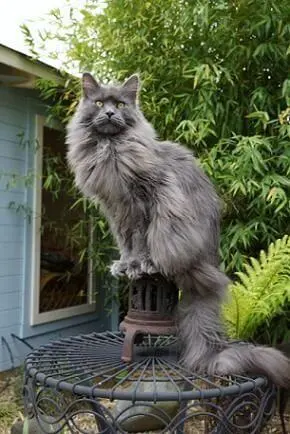
According to this theory, Maine Coons are descended from cats that belonged to Viking explorers who settled in North America around 1000 AD. The Vikings were known to keep cats on their ships to control the rodent population, and it is believed that some of these cats made their way to the shores of Maine, where they bred with local wild cats.
1-Viking ancestry theory:
This theory suggests that Maine Coons are descended from cats that belonged to Viking explorers who settled in North America around 1000 AD. According to this theory, the cats breed with local wild cats, resulting in the development of the Maine Coon breed.
This theory is supported by the fact that Maine Coons share many traits with Norwegian Forest Cats, which are believed to be descendants of the cats that the Vikings brought with them on their voyages. Both breeds have long, thick fur that helps them to survive in cold climates, as well as large paws that are well-suited for walking on snow.
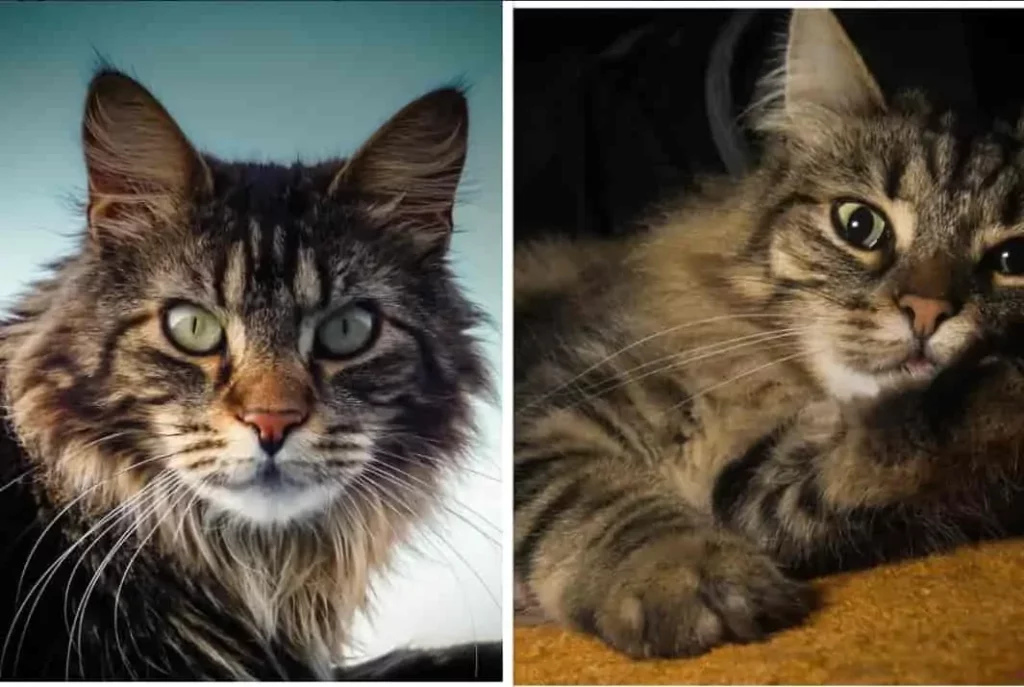
Maine coon cat vs Norwegian Forest Cat
Another piece of evidence in support of the Viking ancestry theory is the fact that Maine Coons were first recognized as a breed in the United States in the mid-19th century. This was around the same time that there was a renewed interest in all things Scandinavian, including Norse mythology and Viking history.
2-Ship’s Cat Theory:
Another theory suggests that The Maine Coon Cats Breed were originally ship cats that were brought to America by European sailors. These cats were prized for their hunting skills and often used to control ship rodent populations. According to this theory, Maine Coons are descended from cats that were brought to America by European sailors. Sailors often kept cats on board their ships to control the rodent population, which was a common problem in the cramped conditions of a ship. It is believed that some of these cats made their way to the shores of Maine, where they bred with local cats to produce the Maine Coon breed.
One of the most compelling pieces of evidence supporting this theory is the fact that The Maine Coon Cats Breed shares many characteristics with other breeds of cats that were known to be ship’s cats, such as the Turkish Angora and the British Shorthair. These breeds are also known for their ability to control rodents and their friendly, adaptable personalities.
Another piece of evidence supporting the Ship’s cat theory is the fact that Maine Coons were recognized as a breed in the United States in the mid-19th century, around the same time that the shipping industry was booming. It is possible that sailors brought their cats with them to the shores of Maine, where they were used as working cats on farms and in homes.
Despite the evidence in support of the Ship’s Cat theory, there are still some who dispute it. They argue that Maine Coons could have developed from several different sources, including natural selection, genetic mutations, or a combination of various breeds.
3. Natural Selection Theory:
The Theory of Natural selection is a fundamental concept in evolutionary biology that explains how traits and characteristics of organisms change over time. It states that individuals with advantageous traits are more likely to survive and reproduce, passing those traits on to future generations. When it comes to the Maine Coon cat, natural selection theory can help us understand how this breed has developed its unique characteristics.
Maine Coon cats are known for their large size, robust build, thick fur, tufted ears, and bushy tails. The natural selection theory suggests that these traits may have arisen as adaptations to the harsh environment of Maine, a northeastern state in the United States.
One hypothesis is that the Maine Coon cat’s large size and sturdy build could have provided them with an advantage in surviving cold winters and navigating snowy terrain. The thick fur would have provided insulation, allowing them to endure the frigid temperatures. Additionally, their tufted ears and bushy tails could have helped protect them from frostbite.
Hunting Abilities:
The theory of natural selection also explains the development of traits beneficial for hunting and survival. Maine Coon cats have large, expressive eyes, which may enhance their hunting abilities, enabling them to spot prey more effectively. Their strong, muscular bodies and agile nature are advantageous for chasing and capturing prey.
Over time, as Maine Coon cats with these advantageous traits had a better chance of survival and reproduction, the traits became more common within the population. Natural selection acts on genetic variation, so variations that confer benefits in a specific environment tend to become more prevalent in subsequent generations.
4-Genetic Mutation Theory:
The genetic mutation theory explains how new genetic variations arise in populations. Mutations are random changes in the DNA sequence of an organism’s genes. These mutations can occur spontaneously and can result in new traits or variations in existing traits. Genetic mutations are the raw material for evolution, providing the genetic diversity upon which natural selection acts.
Mutations can be beneficial, harmful, or neutral in their effects on an organism’s fitness (ability to survive and reproduce). Beneficial mutations increase an organism’s chances of survival and reproduction, while harmful mutations decrease those chances. The genetic mutation theory recognizes that mutations are essential for introducing genetic variation into populations, which is a prerequisite for natural selection to occur.
Some researchers believe that the distinctive appearance of Maine Coons, such as their long tufted ears and bushy tails, are the result of genetic mutations that occurred naturally over time. According to this theory, the distinctive physical characteristics of Maine Coons, such as their long, bushy tails and tufted ears, are the result of genetic mutations that occurred naturally over time. Maine Coons are believed to have evolved through natural selection, adapting to the harsh winter climate of Maine. Their thick, long fur and large paws were essential for survival in the wilderness.
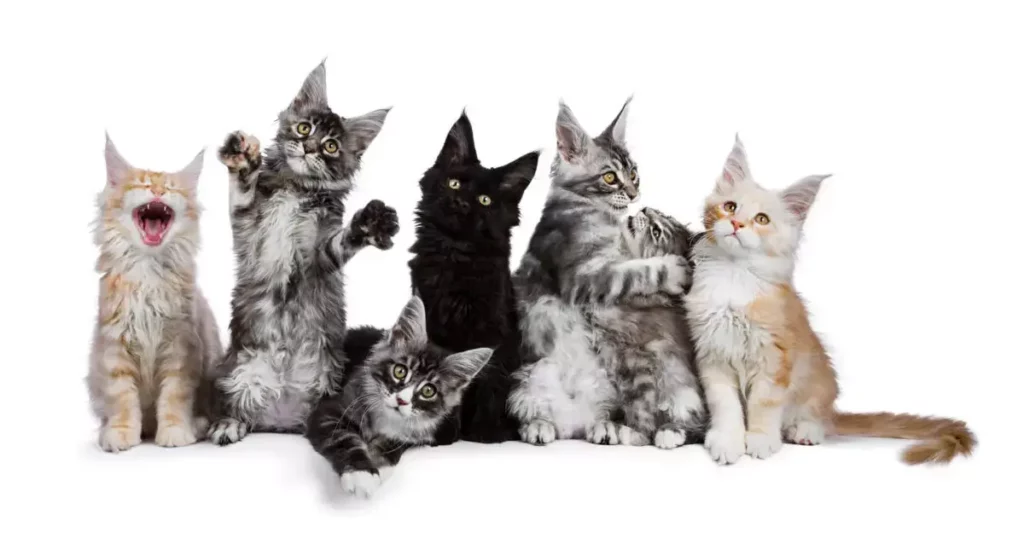
Some researchers believe that the genetic mutations that led to the development of Maine Coons may have occurred as a result of inbreeding. Inbreeding occurs when closely related cats mate, leading to a higher likelihood of genetic mutations. This theory is supported by the fact that Maine Coons were initially bred in small, isolated communities in Maine, where inbreeding was more likely to occur.
The genetic mutation theory is also supported by the fact that The Maine Coon Cats breed shares many physical characteristics with other breeds of cats that are believed to have developed through natural selection, such as the Norwegian Forest Cat and the Siberian Cat. Both of these breeds have long, thick fur and are well-suited to cold climates.
Conclusion:
In conclusion, the Maine Coon Cats breed originated in the state of Maine in the United States. While there are various theories about their origin, including Viking ancestry and being ship’s cats, the true origin remains a mystery. Despite a decline in popularity, the breed was revived by dedicated breeders and is now one of the most beloved cat breeds worldwide. The Maine Coon is known for its large size, fluffy coat, and gentle personality.


